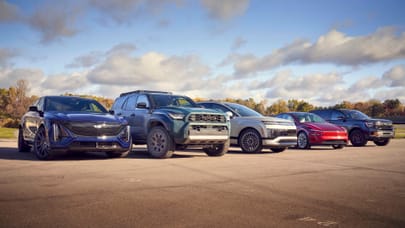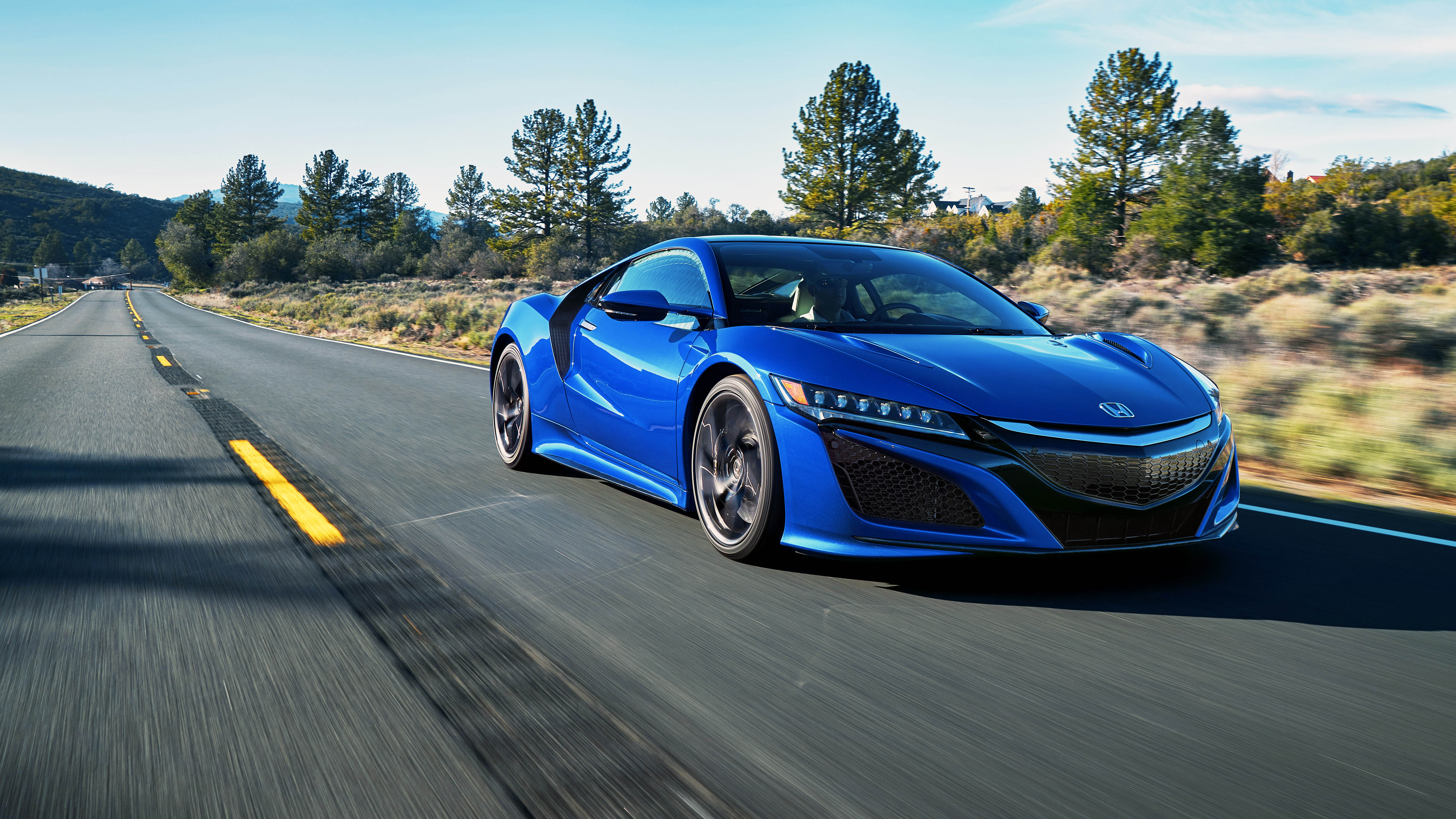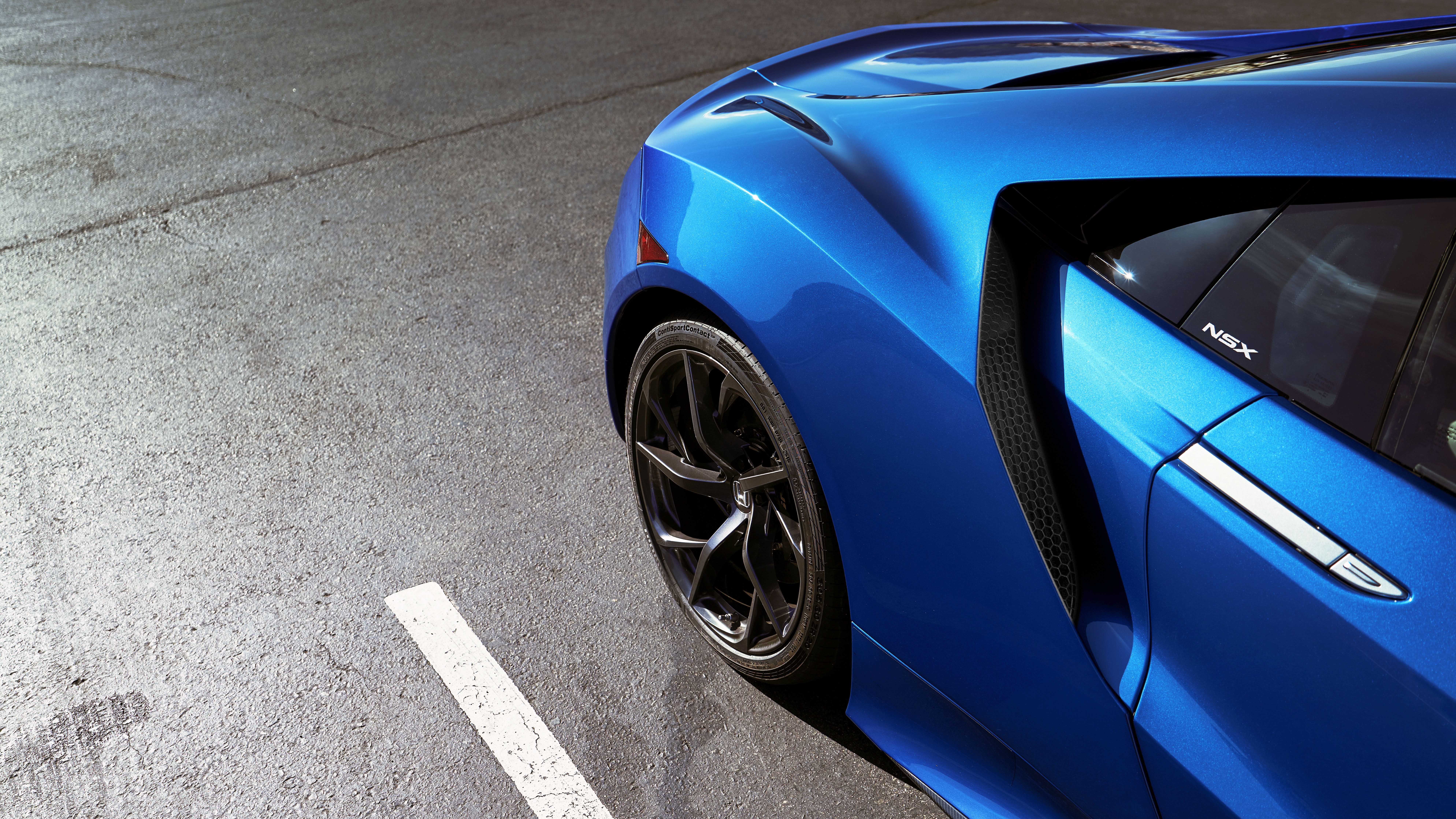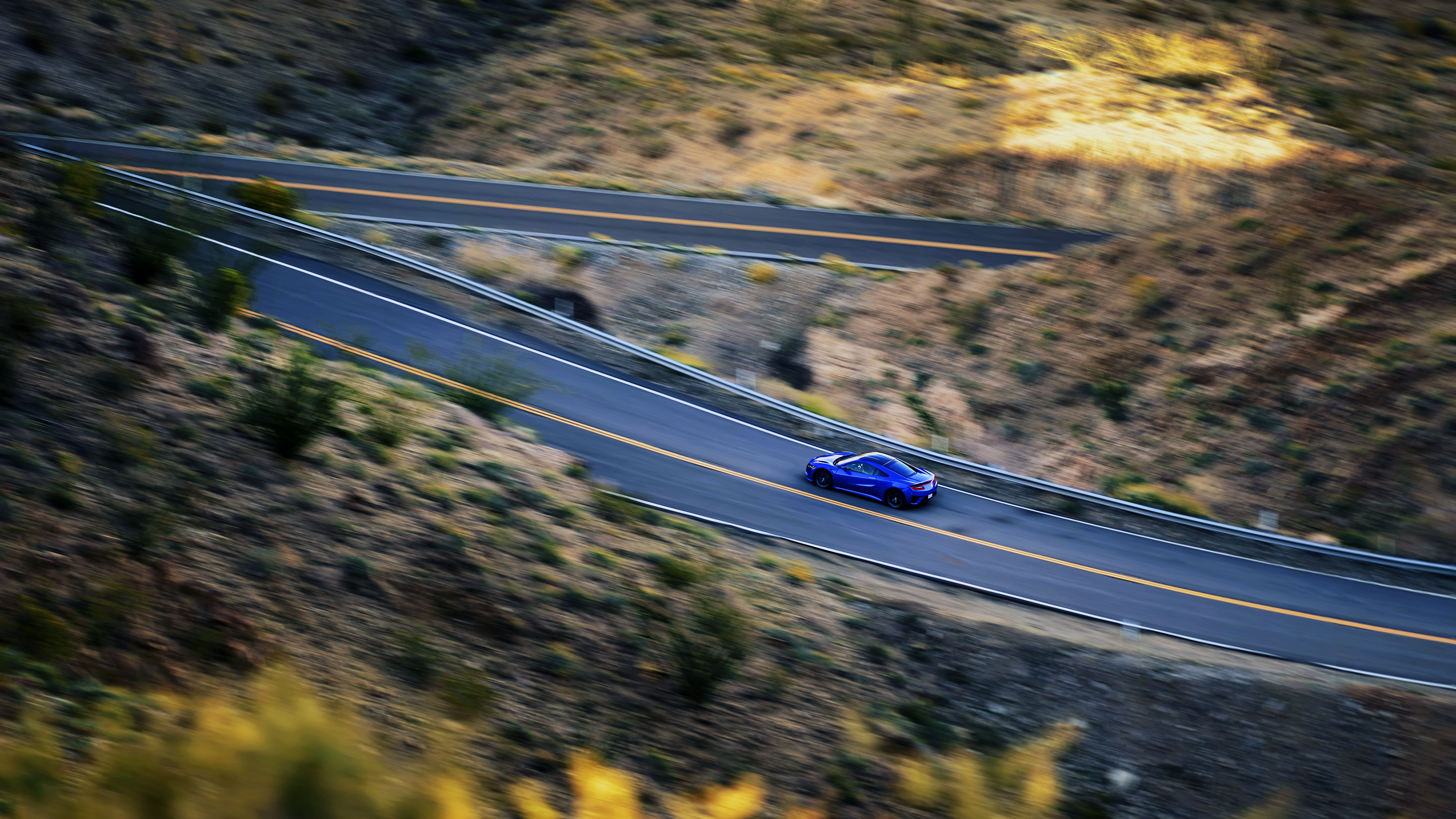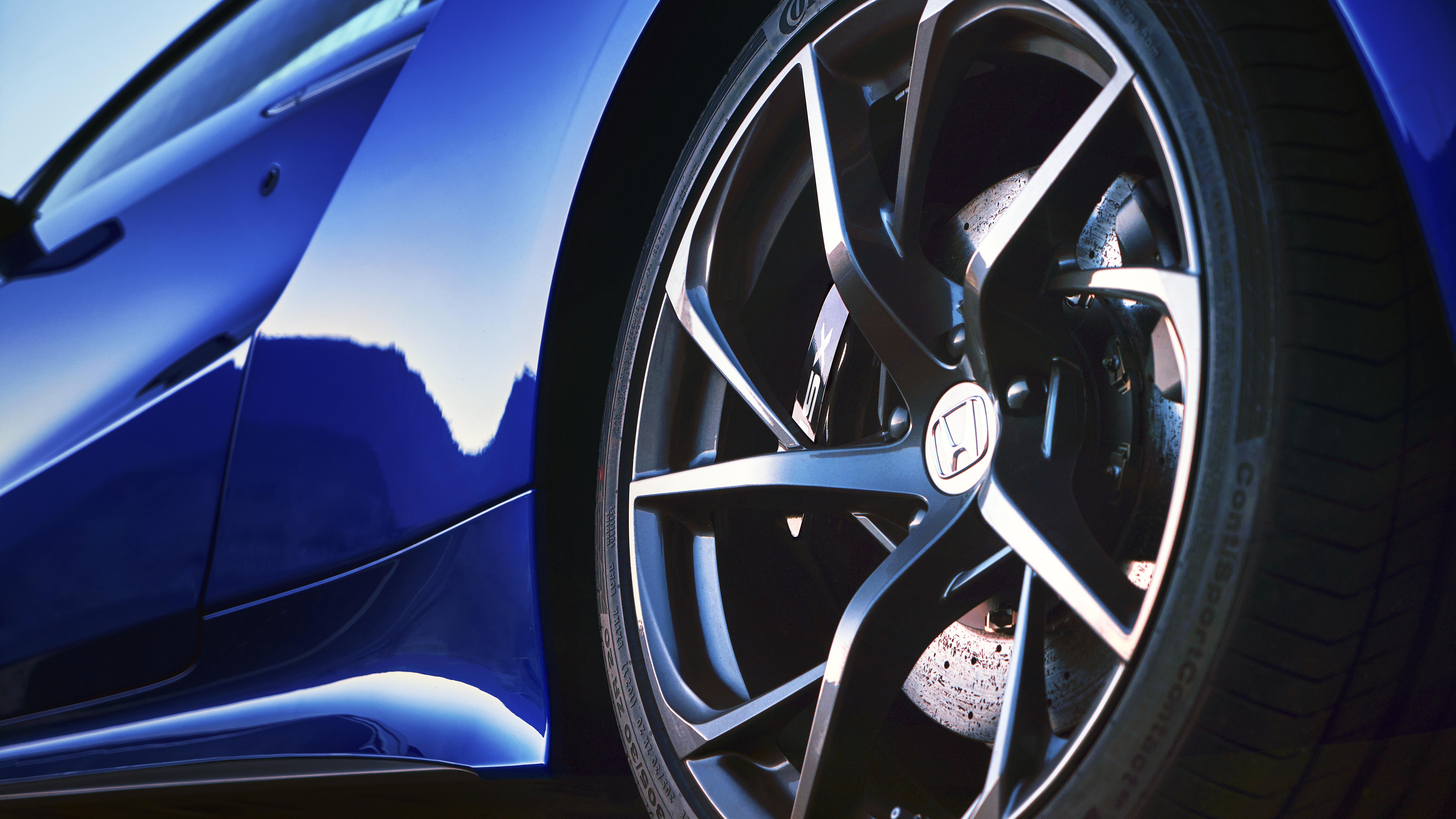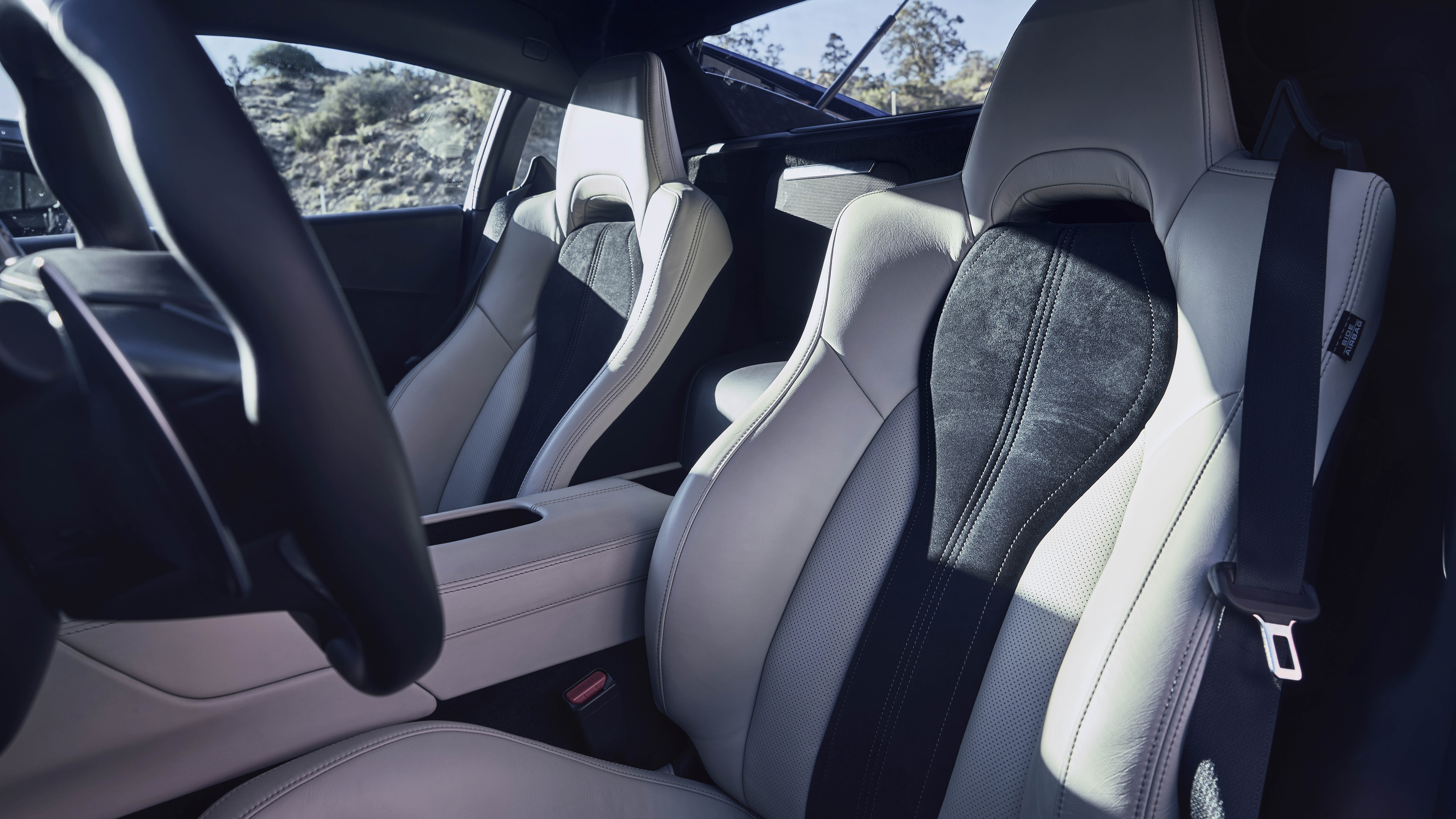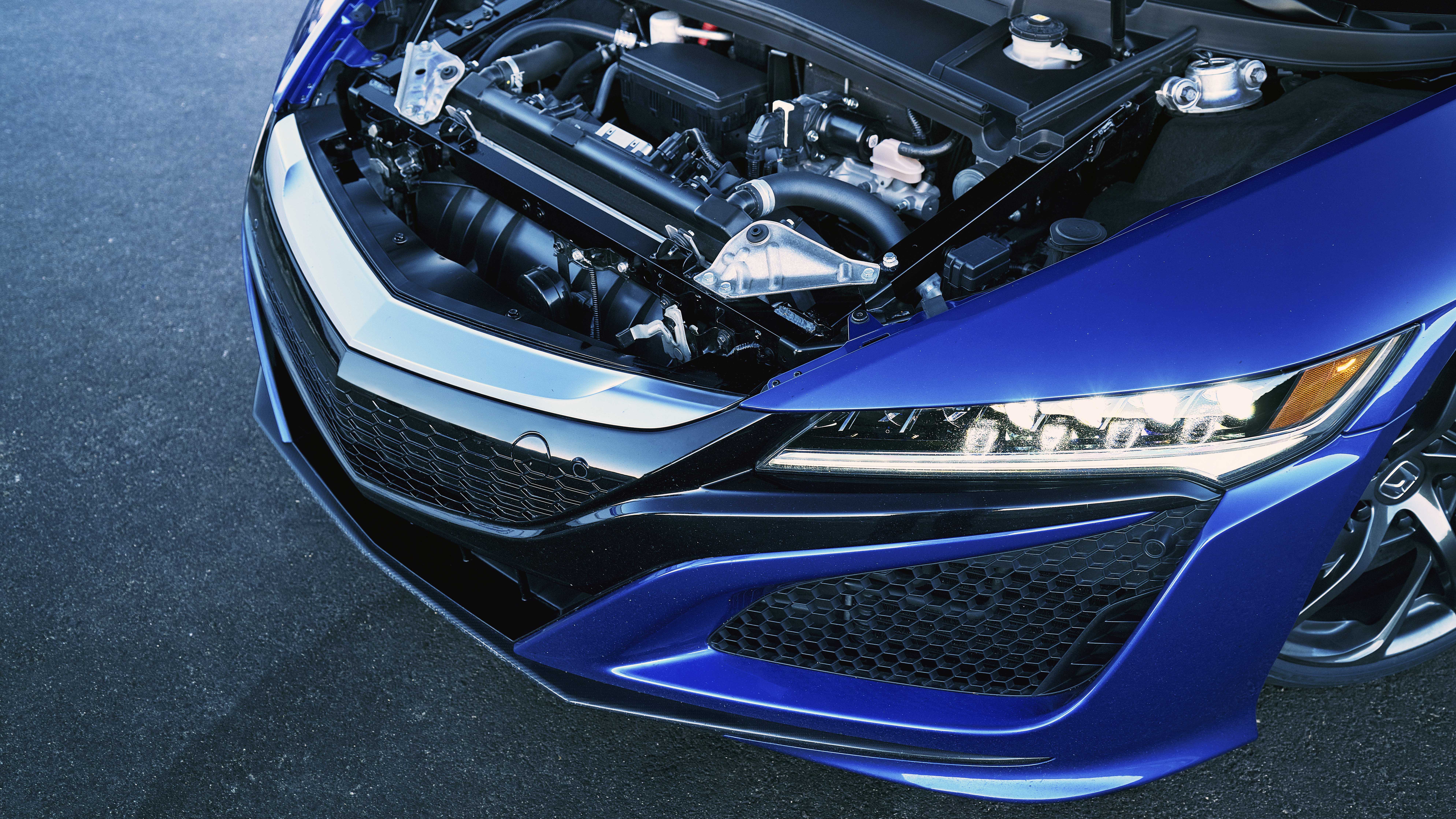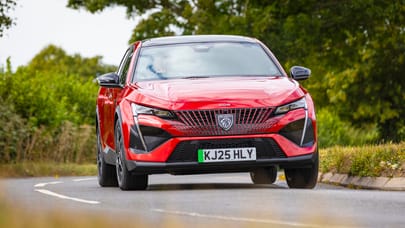
The wait is over: driving the new Honda NSX
You've seen it on TV, now read the NSX's story. Can a car possibly warrant so long in development?
IndyCar legend and NSX development driver Dario Franchitti is midway down the long straight at Thermal Raceway and, rather predictably, is disappearing into the distance. “If you want to catch him, try braking at the ‘3’ board,” offers my passenger.
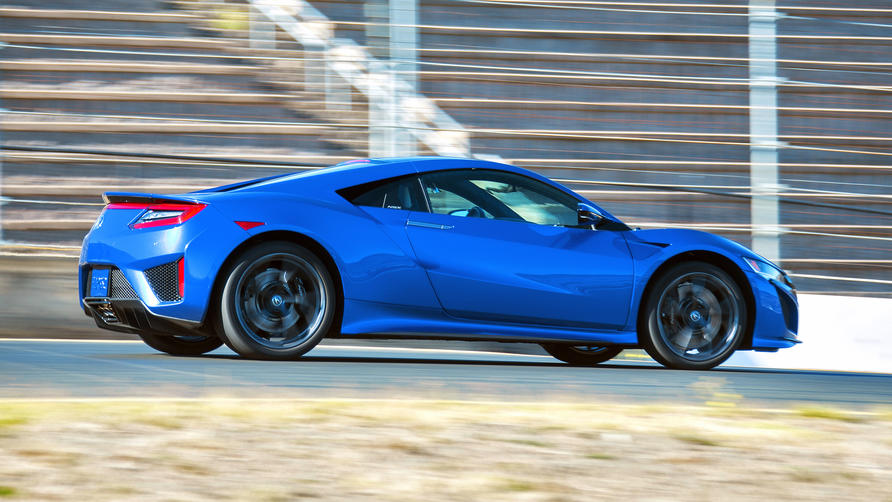
Words: Charlie Turner
Photography: Webb Bland
This feature was originally published in Issue 282 of Top Gear magazine.
A few seconds later. “Actually maybe it’s the ‘4’ for this one,” adds Jason Widmer, the NSX’s performance development leader. As confidence-inspiring passenger inputs go this isn’t helping. I have a brief panic, but fortunately Jason is a better development leader than co-pilot, and the NSX sheds all the speed and gears it needs to, before the front-end torque vectoring works its automotive voodoo and pulls us out of the corner and onwards. The gap to Dario remains just as significant.
Cut to later that afternoon, and the NSX is busy devouring the famous Palms to Pines highway. A road as open and inviting as this is perfect for settling into a fast flow, piling deep into corners and then jumping on the throttle earlier than you’d normally dare.
The front end e-motors work their magic, pulling the car round and delivering impossible exit speeds. It’s effortless and addictive – the years spent developing this car have not been wasted.
But, boy, has it had a long gestation. It was nine years ago – nine – that Honda announced it would be developing a new NSX, and that it would be powered by a naturally aspirated V10. Then, amid the economic downturn, it was cancelled.
And then, in 2011, it was back on the cards. A concept was shown in 2012. In the four years since then? A fair few sightings at the end of long lenses, plenty of speculation in the online communities, but otherwise it’s basically been the most tantalising tease in supercar history.
So let’s fill in some of the gaps, because the back story is fascinating. The V10 was initially investigated because, at the time, it was inline with F1 requirements, since then Honda has left F1 – and then returned. We’ll skate over that, but point out that the chosen V6 hybrid layout does once again have some F1 relevance.
It’s basically been the most tantalising tease in supercar history.
Initially it was to be mounted transversely and naturally aspirated, but over time technology moved on and the decision was made to add twin turbos and rotate the powerplant though 90 degrees for better packaging, weight distribution and heat management.
Can you imagine the conversation? “Ok team, soooo… you know you’ve spent a few years developing the car, designing the exterior, sorting the packaging? Well, we need more power…” Awkward.
Top Gear
Newsletter
Thank you for subscribing to our newsletter. Look out for your regular round-up of news, reviews and offers in your inbox.
Get all the latest news, reviews and exclusives, direct to your inbox.
But these changes aren’t a legacy of the drawn-out time periods involved, but instead a deep-rooted obsession to get the car exactly right.
The NSX now has a 3.5-litre V6 twin-turbo generating 500bhp. Wedged between it and the nine-speed twin-clutch ’box lies a brushless electric motor developing 47bhp and 109lb ft of torque, which gap-fills the turbo lag at low revs. It also serves as the starter motor, which in turn saves weight.
At the front end, two further motors, sharing a single clutch and producing 36bhp apiece, are mounted inboard, driving a front wheel each and allowing the NSX to indulge in the black art of torque vectoring. At the rear, a limited-slip differential divvies up the torque.
All three motors are powered by a lithium-ion battery pack running down the centre of the car and across behind the seats, forming a ‘T’. This battery is charged by the V6 motor and regenerative braking.
So what we’re talking here is an AWD supercar with a combined output of 573bhp and enough computer processing power to make NASA blush. However, it’s also led to a 1,725kg kerbweight – that’s 100kg more than the V10 AWD Audi R8, and a quarter of a tonne more than a Ferrari 488.
Styling is a fiercely personal thing, but despite being first created in Japan, then developed in Honda’s LA studio, it channels a manga-meets-Tony-Stark vibe that has a sharp origami precision to it. The predominantly aluminium bodywork is stretched over the structure, manipulating the air, and cooling the battery cells and complex hybrid drivetrain.
Not that it helped my laptop, which practically fried its circuits having spent an afternoon in the “trunk”. Incidentally, the trunk is large enough to accommodate a golf bag. As long as you like your seven iron lightly roasted.
Making the NSX, at full production, the team will produce eight units a day. Next door, they build 850 Accords in the same time.
US influence doesn’t end with the styling. America will be the NSX’s biggest market, so development has been led by a US team, and the car will be built by a squad of 100 in Ohio. This means the nine-speed ’box, rear motor and other hybrid systems will be manufactured in Japan then shipped to Honda’s Performance Manufacturing Centre in Columbus, where they will meet the locally hand-built V6.
To give you some idea of the time and effort that goes into making the NSX, at full production, the team will produce eight units a day. Next door, they build 850 Accords in the same time.
It’s a complex car to build. The chassis has a mixed materials construction, mainly aluminium, with special castings at the key suspension mounting points and carbon fibrefor the floor. Honda claims the chassis is stiffer than anything the opposition has (it cites the R8, 911 Turbo and 458 Italia, which shows the length of the car’s gestation), but won’t be drawn on specific numbers. Nor will it talk aerodynamic efficiency or downforce, except to say the latter is “significant”.
That’s commendable, given the NSX relies on clever aerodynamic channels rather than complex deployable spoilers, which in turn keeps the car looking uncluttered. However, you can option a carbon-fibre rear wing and more aggressive front splitter. I’d have them – made from matte carbon weave, they add an additional layer of intent.
I walk up to the NSX. The doorhandles project out to meet me. There’s no swan or gullwing trickery here, just standard doors designed for “easy access”, but every time I got into the car with a helmet on, I banged my head. So let’s say access is snug.
The seats are plush, comfortable and hold you tightly. The interior, clad in leather and contrasting brightwork, is modern and continues the exterior theme with floating surfaces. My biggest issue is the quality of some of the materials: there’s loads of metal-look plastic, and a lack of authentic materials on some of the key touchpoints – most notably the doorhandles, paddle shifters and dynamic mode selector – undermines cabin quality.
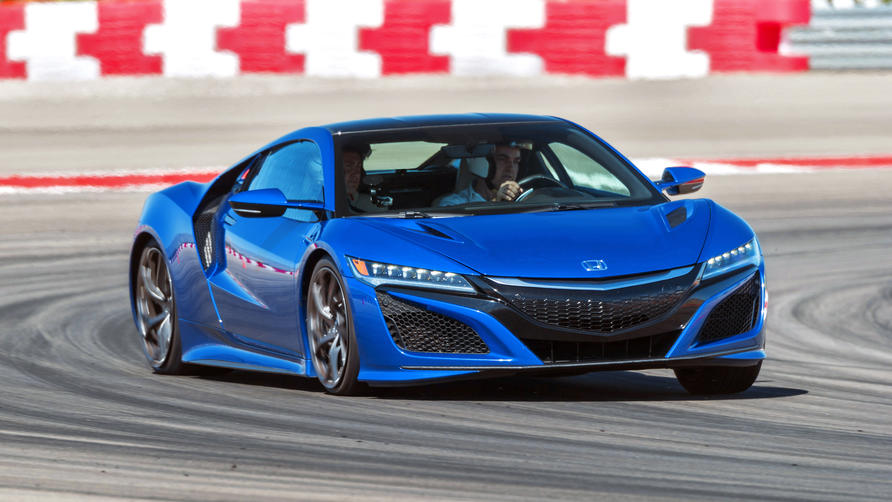
That dynamic mode selector has four modes: Quiet, Sport, Sport+ and Track. You can choose which the car starts in – based on how much you like your neighbours. Quiet allows you to leave in EV silence. It’s good for about two miles if you’re abstemious with the throttle.
Sport blends V6 and e-motors together, but this is the NSX’s least convincing mode: the V6 drones at low revs and you’re more aware of the myriad complex systems’ involvement in proceedings. Flick it to Sport+ and the car comes alive. The third-generation magnetorheological dampers stiffen, the steering and throttle response sharpen, and the whole car is more focused and purposeful.
Push through the lower end of the rev range and the previously bland V6 comes alive and starts to sing. The combined thrust is mighty – every bit as forceful as an R8 V10– the gearshifts are instantaneous, and with nine ratios to play with, there are plenty of opportunities to flick around and keep the V6 pushing to the 7,500rpm red line.
On Palms to Pines, there’s a suppleness to the ride that is reminiscent of the McLaren 650S; I’m blown away by how effectively the NSX hides its mass. There’s initial understeer – let’s call it a safety warning – but once into the meat of a corner, the NSX hits a sweet balance point.
It feels very together, deploying its considerable processing power to swallow tarmac at an alarming rate and with enough harmony to make you realise how well integrated electricity and internal combustion are here. I fire the NSX up and down this road, relishing the low-rev torque fill, the refinement and integration of the systems, the sheer speed generated.
But to really exploit the NSX’s potential, I need a track. Back at Thermal, my car is now shod with optional Pirelli Trofeo R tyres, and the dial is clicked into Track, opening a valve behind my head to increase induction noise by 25dB. Dario is still some way in the distance, but his involvement – and the team’s achievement – becomes more obvious as the laps accumulate.
Following his lead, I start to dig deeper into the NSX’s capabilities. You can brake impossibly late with the optional carbon-ceramics, and even when I completely overcook it and the car begins to slide, the system allows a decent amount of angle before the e-nannies kick in.
Most of the time, it does a staggeringly good job of hiding its weight, although it’s most obvious mid-corner. The trick is to lay off the throttle, allow the car to settle, then feed it back in and let the torque vectoring weave its magic.
Quarter-mile more your thing? The NSX has one of the most undramatic but effective launch control systems I’ve experienced. In Track, brake with your left, turn the Dynamic dial to the right until it beeps and LC is enabled.
Push the throttle, the revs rise to 2,500rpm, step off the brake and all three electric motors fire you off the line, the V6 joining the party once the turbos have spooled up. The combined effect is violently effective. No wheelspin, no head-slamming clutch dump, just relentless thrust.
“Complex and effective” sums the NSX up. But it’s also immersive – more so than I expected. The braking, steering and integration between the V6 and those three e-motors could have been a recipe for a car that constantly interrupts your enjoyment.
But the NSX isn’t like that. You learn to drive with the systems, not against them, and in return it delivers a fascinating analogue feeling. It’s testament to years of optimisation and testing, of perfectly integrated algorithms and subtly honed hardware.
The R8 and 488 are the benchmark competitors, but oddly that comparison feels slightly off-target. When I was driving the NSX, the car it most put me in mind of was the Porsche 918. There are parallels. Both took years to get right, both hide their additional mass with trick electronics and both represent a new kind of performance car.
Supercars used to be one-dimensional: all show, noise, performance and drama, but the NSX is different. Like the 918, and even the BMW i8, this is a car where electrics add an important dimension to the experience, significantly broadening the appeal. Better still, Honda describes the NSX as “not the finish line, just the start point”. There’s more to come, then, but as a start point it was well worth the wait.
Trending this week
- Car Review
Hyundai Kona
- Long Term Review
Time's up with the Mini Countryman: here's the six-month verdict




